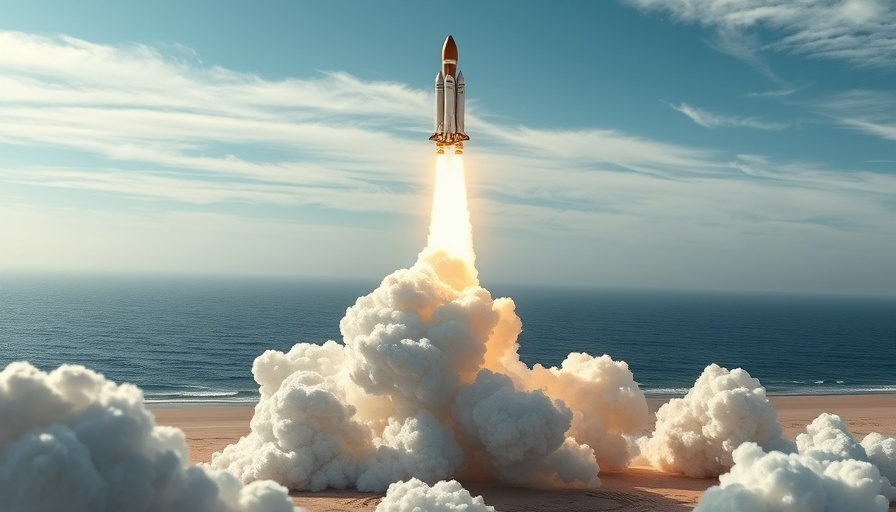
SpaceX's Ambitious Starship Trial: What Went Wrong?
On March 6, 2025, SpaceX's latest endeavor to conquer the cosmos faced another setback during its eighth test flight. The mission aimed to demonstrate the capabilities of the Starship megarocket but ended with the loss of the Starship upper stage following another 'rapid unscheduled disassembly,' a term SpaceX has become all too familiar with. Despite this, the company's innovative technology for catching the Super Heavy booster remains a highlight of the operation.
Behind the Launch: Super Heavy's Successful Recovery
The Starship system, towering at a groundbreaking 403 feet, lifted off from its South Texas launch site at 6:30 p.m. EST. Seven minutes into the flight, SpaceX executed a dramatic maneuver—successfully catching the Super Heavy booster using the launch tower's 'chopstick' arms. This was the third successful catch attempt and signifies progress in SpaceX's goal to streamline rocket reusability, a critical aspect of Elon Musk's vision for sustainable space travel.
Lessons from the Failure: Analyzing Starship’s Flight Path
While the catch was an achievement, the loss of the upper stage raises questions about the flight's design and testing processes. SpaceX had prepared rigorously, employing pre-flight static tests and implementing changes to the rocket's fuel systems based on previous flight anomalies. Yet, issues emerged when several of Starship's six engines failed during the ascent, preventing successful payload deployment and leading to the vehicle's destruction over the Atlantic Ocean. Despite losing communication with the spacecraft approximately nine minutes post-launch, SpaceX remains committed to learning from these challenges.
The Broader Context: SpaceX's Goals and the Future of Space Travel
SpaceX has positioned the Starship as an essential vehicle for future missions to Mars, making the need for reliable test flights imperative. Each failed test generates valuable data that informs future improvements. The current goal is a cadence of 25 launches in 2025, a feat that relies heavily on the successes of these prototypes and refinements in technologies.
Why It Matters: The Impact on Aerospace and Space Exploration
The consequences of these test flights extend beyond SpaceX. The mishap impacted air traffic in the Miami area as the FAA temporarily slowed flights to ensure safety due to falling debris. This stark reminder of the challenges surrounding aerospace technologies highlights the intricate balance between innovation and safety in the quest for space exploration.
Communities Rallying Around Innovation and Exploration
The local communities in South Texas and beyond continue to support SpaceX's ventures, embracing the spirit of exploration that drives technological progress. As the company faces these hurdles, the collective eagerness to witness human potential in space propels it forward. Community engagement remains essential as SpaceX strives to achieve its ambitious goals.
What Lies Ahead: Prospects for Starship and SpaceX
The results from the latest flight present an invaluable lesson for SpaceX, ensuring that the upcoming tests are better prepared. As the company continues to adjust its designs, engineers and innovators must remain resolute in their pursuit of a reliable spacecraft capable of launching humanity into new worlds. Each step, whether triumphant or challenging, serves a crucial purpose in shaping the future of space travel.
SpaceX's journey with Starship exemplifies the complexities of pioneering space technology and reminds us of the resilience required to push boundaries. With continuous testing, learning, and adjusting, the ultimate goal of making interplanetary travel accessible may still reign supreme on the horizon.
To stay updated about the next chapter in SpaceX's exploration journey, engage with the community discussions and share your thoughts on what developments you would like to see happen in the aerospace industry.
 Add Element
Add Element  Add Row
Add Row 



 Add Row
Add Row  Add
Add 


Write A Comment